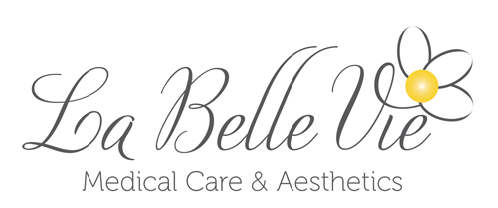A National Library of Medicine article published in January of 2023 confirms the effectiveness of C02 Laser Skin Treatment. The article states: “Carbon dioxide laser skin resurfacing is a technique effective for both cosmetic and medical applications. It is an excellent modality for treating and preventing wrinkles and skin laxity that occur with photoaging.”
The article is a comprehensive guide for CO2 laser skin treatment. It covers everything from pinpointing indications and contraindications for carbon dioxide (CO2) laser resurfacing to detailing the essential equipment and personnel. Additionally, it outlines the preparation and technique, reviews potential complications, and aims to enhance outcomes in CO2 laser resurfacing procedures.
While the publication provides valuable insights into CO2 skin resurfacing, it is complex and challenging to understand. This is why La Belle Vie Medical Care & Aesthetics has decoded and summarized the article, emphasizing critical information for your convenience. If you’ve been wanting to know more about the science behind this excellent treatment, we’ve got you covered.
CO2 Laser Resurfacing Unveiled: A Reader-Friendly Summary

The History of CO2 Lasers
Since the 1960s, carbon dioxide lasers have played a vital role in medical procedures. Initially used for tissue cutting and destruction, they evolved in the 1990s with high-energy pulsed CO2 lasers, allowing more superficial tissue ablation while minimizing damage to deeper layers. These advanced lasers, effective in applications like cutaneous resurfacing, led to the introduction of fractional CO2 laser systems in 2004.
Fractional treatment involves splitting the laser into microbeams, creating columns of ablation with surrounding undamaged tissue. This method offers a potentially better side effect profile by reducing the risk of dyspigmentation.
How Does CO2 Laser Resurfacing Work?
Laser resurfacing with CO2 lasers is a technique that uses focused energy to remove the outer layers of the skin. The fractional approach involves breaking down the laser beam into tiny beams, creating columns of removal with untouched skin around them. The CO2 laser emits energy at a wavelength of 10,600 nm, absorbed by water in the skin cells. This process encourages the skin to heal and regenerate from its own structures, promoting collagen remodeling in the deeper layers and ultimately tightening the skin.
What Can CO2 Laser Resurfacing Treat?
Carbon dioxide (CO2) lasers serve a versatile role in treating various skin conditions. For example, they are highly effective in addressing photoaging, reducing scarring visibility, and even prevention and treatment of certain skin cancers and vascular lesions. Optimal results are observed in individuals with Fitzpatrick type I-II skin, particularly fair-skinned Caucasians, due to their fewer melanocytes, which minimizes the risk of post-procedure dyspigmentation.
In cosmetic applications, CO2 laser resurfacing proves beneficial for treating photoaged skin characterized by laxity, irregular color, and static rhytids. Compared to methods like dermabrasion and chemical peels, CO2 lasers offer precise control over the treatment area, depth, and extent of thermal damage, resulting in significant improvement in various facial regions. Additionally, CO2 lasers effectively address scars from acne, trauma, or surgery by inducing controlled thermal damage and stimulating collagen production. They are particularly advantageous for surgical scars, causing less bleeding and crusting than dermabrasion.
Medical Precautions
Several factors restrict the suitability of CO2 laser resurfacing and are considered medical precautions (or contraindications). They include:
- If active acne is present, there’s a risk of infection or abnormal colonization post-procedure.
- Open wounds or ongoing infections, especially from the herpes simplex virus, should delay the treatment until resolved.
- Adnexal damage from autoimmune diseases, burns, or irradiation can hinder proper healing, making patients with such histories unsuitable for CO2 laser treatment.
- Recent use of oral isotretinoin (within the past 6 to 12 months) may result in delayed wound healing or undesirable scarring.
- A history of conditions associated with the koebnerization phenomenon, like vitiligo and psoriasis, also makes individuals unsuitable candidates for this therapy.

Treatment Preparation
Before laser treatment, it’s essential to conduct a thorough patient history and physical examination. Evaluating the Fitzpatrick skin type is crucial to understanding the risk of complications and the potential success of laser treatment. Patients with higher Fitzpatrick skin types may benefit from using hydroquinone and glycolic acid to reduce the chance of dyspigmentation. At La Belle Vie, we educate and inform our patients about expected results, pre-procedure, and post-procedure care, including potential complications.
Technique and Treatment
Choosing the right pain control method is also crucial for CO2 laser resurfacing. For complete facial treatments, general or dissociative anesthesia is sometimes used. Smaller areas may rely on topical anesthetics followed by a local block for patient comfort. Eye protection like inserts or goggles is chosen based on the treated area, with caution about light reflecting onto the cornea.
Standard practice involves starting antiviral therapy for all patients to reduce the risk of infectious complications, considering most people have been exposed to the herpes simplex virus. Antibiotics like cefadroxil or doxycycline are often prescribed post-procedure.
Resurfacing and healing start to occur about 6 to 7 days after treatment. Post-procedure care involves using films or ointments for the first 48 hours to aid healing. Swelling, pain, and redness can persist for 1 to 2 weeks, with inflammation typically gradually resolving over six weeks.
Possible Complications
Post-procedure, patients may experience erythema, peeling, and skin fragility, lasting up to 3 months. Short-term complications include milia and acneiform eruptions, with herpes simplex virus reactivation being a potential risk. Infections are less common due to “thermal sterilization,” but issues like changes in pigmentation (hyperpigmentation and hypopigmentation) may occur.
Who Can Perform CO2 Laser Resurfacing Treatments?
CO2 laser resurfacing is performed by a licensed physician, including dermatologists, otolaryngologists, plastic surgeons, and oral surgeons. Assistance for the procedure can be provided by clinicians, physician assistants or nurses who are trained in the use of lasers for cutaneous ablation. All of your healthcare team members at La Belle Vie have training in laser safety. We also provide pre-procedure evaluation and counseling as well as post-procedure follow-up.
The skilled team at La Belle Vie Medical Care & Aesthetics in Draper, Utah, specializes in addressing wrinkles, combating skin laxity due to photoaging, and managing keratinocyte skin cancers. To recap, here are some of the concerns that CO2 laser resurfacing can help treat:
- Wrinkles: Reducing fine lines for a more youthful appearance.
- Acne Scars: Improving skin texture and diminishing acne-related flaws.
- Age Spots: Effectively diminishing the appearance of sun-induced age spots.
- Surgical Scars: Fading scars from previous surgeries or injuries.
- Pore Size: Minimizing enlarged pores, particularly in individuals with oily skin.
- Uneven Skin Tone: Promoting a more even and balanced complexion.
- Sun Damage: Repairing skin affected by the sun’s harmful rays.
- Fine Lines: Smoothing out fine lines for a rejuvenated look.
- Skin Laxity: Enhancing skin tightness and firmness.
- Texture Improvement: Achieving a smoother and more refined skin texture.
Choose La Belle Vie Medical Care & Aesthetics for a comprehensive consultation and embark on your journey to radiant and revitalized skin. Call us today to schedule your appointment and discover the perfect blend of expertise and aesthetics.
- Hybrid Health and Beauty in Utah: The Rise of Tweakments and the “Utah Look” - October 9, 2025
- Non-Surgical and Non-Invasive Beauty and Anti-Aging Solutions in Draper, Utah - September 29, 2025
- Hyperdiluted Radiesse and CoolSculpting: A Winning Combo for Cellulite and Saggy Skin - September 22, 2025

